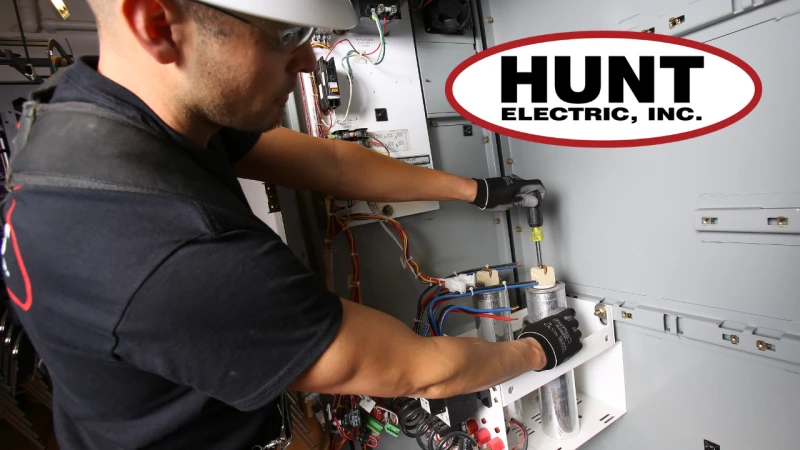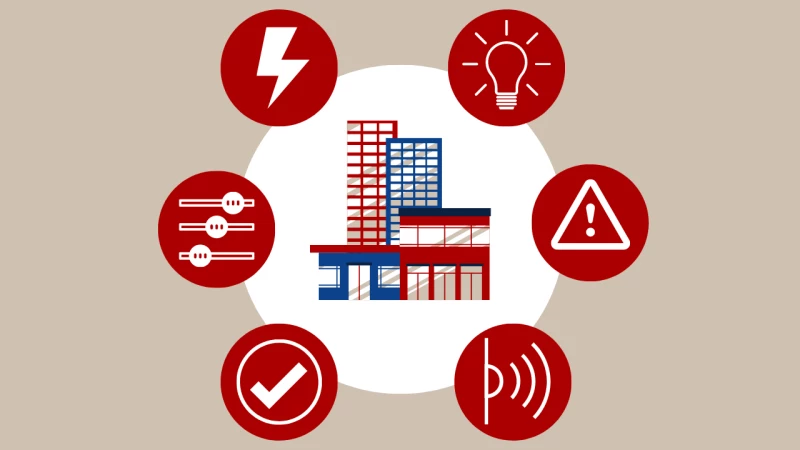Over the last 20 years, power outages in the U.S. due to severe weather have doubled. As climate change and an aging electrical grid make power disruptions a greater risk, businesses are seeking ways to reduce the impact potential outages caused by all types of natural disasters could have on their operations.
The managers of Hunt Electric’s Service Division and High Voltage Division, who have more than 55 years of combined experience in the industry, recently recommended steps you can take to prepare for power outages caused by natural disasters and recover from them if they occur.
Build Relationships Before You Need Them
Establish a relationship with an electrical contractor you trust before a natural disaster or event beyond your control causes a power outage. A contractor who will make getting your power back online their first priority is critical to your operations. Because of your long-term relationship, the contractor will have a better understanding of your facility, how it operates, and the best way to get it up and running. It is also important to form relationships with external partners and pre-negotiate emergency service contracts with outside vendors to protect you from overpricing and inadequate support after a natural disaster. If you own your own power substation, building a relationship with a high-voltage contractor or having trained substation technicians and linemen on your payroll is imperative to maintaining power reliability.
It is also important to know which electric utility serves your building and have its emergency phone number on hand in the event of a power outage. Know where to find your electrical utility meter. In an outage, if the meter is flashing numbers, the power outage is on your side of the meter (not the utility’s) and you will need to provide an electrician or electrical contractor to safely restore power to your facility.
Install Backup Power
Having a redundant power supply keeps your business running when the lights go out. The size of your redundant power supply depends on several factors.
- The amount of power you need
- How long you use the backup power
- The amount of space you have for the backup system
Once you determine the size of the redundant power system you need, you can choose from different types of backup power systems that include diesel-powered flywheels, turbines driven by gas or wind, backup battery systems, and even fuel cells. Your electrical contractor can help you decide which option is best for you.
Buy Replacement Parts Ahead of Time
Keeping a supply of fuses, rubber goods, and specialized tools on hand makes replacing them easier if a natural disaster causes a shortage. If your business has a primary metering arrangement with the utility company and you are responsible for providing your own transformer, consider keeping a replacement on hand. Because obtaining a new transformer could take up to 60 weeks, a spare transformer is a vital component in preventing disruption of your critical operations. An electrical contractor can help you determine the best replacement parts to keep on hand.
Use The Power Of Preventive Maintenance
Infrared (IR) scans and arch flash analyses on your electrical equipment help your electrical contractor identify and repair problems. Keeping your equipment in optimal condition, by inspecting and maintaining it to make sure it is clean, safe, and sized properly, makes it more resilient in the event of a power outage, and less likely to be damaged or become a safety hazard to employees. This includes making sure electrical equipment is stable and attached to bases and that transformers are attached to the ground to withstand shaking.
Keep Hard Copies Of One-Line Drawings
If a natural disaster causes major damage to your facility, one-line drawings give your contractor valuable information about your electrical system so they can start diagnosing and repairing problems immediately. This detailed knowledge will give them precise information about your operations from the length and position of conduits to the size of your breakers and panels. This information is critical for rebuilding your system and getting it up and running as soon as possible. Having a hard copy of the one-line drawings makes them accessible and usable even when your power and servers may be down.
Make Electrical Recovery Part Of Your Disaster Plan
Odds are that you already have a disaster recovery plan for your business. You can make power recovery part of your plan by working with your electrical contractor. The contractor can help you determine what kind of temporary equipment you would need so that you can create agreements with local vendors to obtain generators or other electrical equipment as quickly as possible.
Identify Mission-Critical Infrastructure
Once you have identified your mission-critical electrical equipment, the next step is to determine how to replace it and how long replacement will take. The final step is creating a plan of action for replacing equipment that is damaged in a natural disaster. Your electrical contractor can help you through this process.
Natural disasters or even common severe weather events that cause power outages can’t be controlled and they’re rarely predictable. But keeping your electrical system in top condition, building a strong relationship with an electrical contractor, and creating a comprehensive recovery plan gives your business the confidence of being prepared for natural disaster events whenever they may occur.
An experienced electrical contractor is a key partner in preparing your business for all types of unscheduled power outages. If you have questions, Hunt Electric is here to help. Contact us today.



